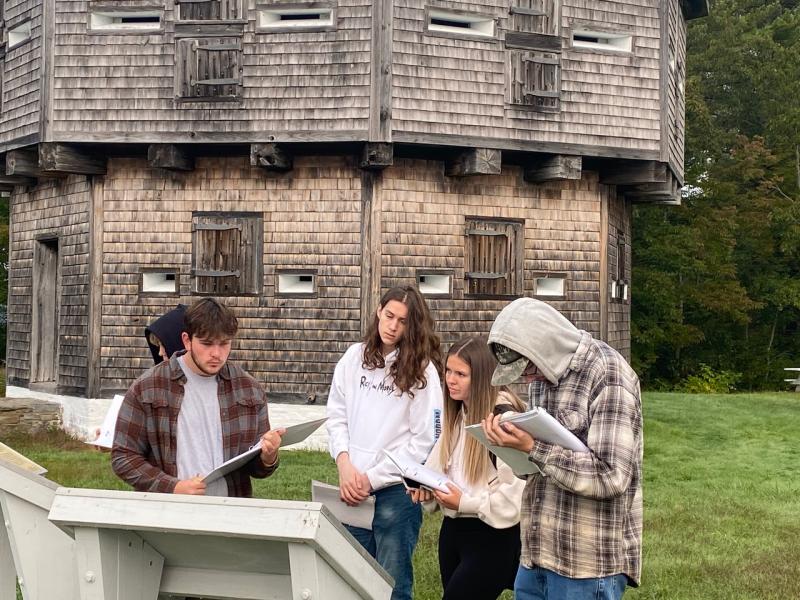Wiscasset students learn national policy, local legacy at Fort Edgecomb
Wiscasset high schoolers studied early American foreign policy and Wiscasset harbor’s maritime legacy while touring Fort Edgecomb recently.
Mason Clark, a student at Wiscasset Middle High School said, “During the early 1800s, Wiscasset was one of the largest ports in all New England. This made it very special in terms of the resources we could acquire and the economy we could build.”
Fort Edgecomb is best known for the blockhouse constructed in 1809 under Thomas Jefferson’s presidency to protect Wiscasset Harbor, a major overseas trading port in the late 18th century.
Alton King, a Wiscasset student, said, “I really appreciate the design of this building, the size of the lumber they used, and the fact that it is oak and other hardwoods makes it stronger and less likely to rot away. The layout and the way they tied in the floor joists is very smart as well.”
The coastal battery system consisted of six large canons overseeing Sheepscot River to block British warships entering the prominent harbor to destroy shipping and commerce in early America. As part of the Second System of American Seacoast Defenses, Fort Edgecomb successfully negated British naval operations during the War of 1812. However, British forces occupied Castine, Belfast and eastern Maine during the three-year war. Wiscasset had prospered as a deep-harbor shipping port, but the Embargo Act of 1807 impacted that.

























